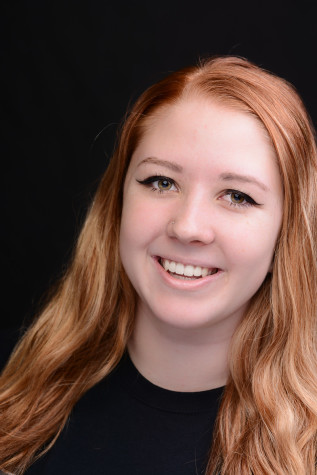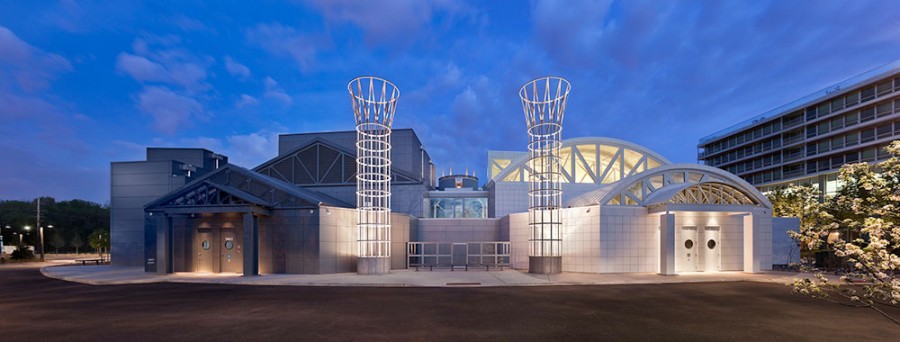Holocaust Museum Visit Casts New Light on Fall Play
ACHS’s fall play, “Who Will Carry the Word?,” will have more inspiration for the upcoming November performances: a little piece of history.
What will you take away from this?
What will you do differently in your life?
How would you answer these questions?
The cast and tech of Antioch Community High School’s fall play, “Who Will Carry the Word,” were challenged to answer these questions by the end of their three hour tour at the Holocaust Museum in Skokie, Ill.
The fall play is set during the Holocaust and follows the lives of Jewish women in a death camp. Wanda Teddy, ACHS Fine Arts department chair took the cast of the upcoming fall play to the museum on Wednesday, Oct. 1, to allow the cast to connect more with their characters’ stories.
“I was hoping they [the cast] would be able to gain emotional and psychological connections to their characters,” said Teddy. “As well as the importance of the message behind the play and why we are presenting it.”
Cast members were split into three different groups with two chaperones and one tour guide each, and all began their tour at different points. ACHS Psychology teacher Tony Borchert and Teddy’s group began in the Pritzger Hall of Reflection, which is a circular room for peaceful discussions and contemplation. The room also symbolizes hope and life. In the center of the room, there are 12 cubes, which many use for sitting, but they are meant to represent the 12 tribes of Israel. Along one half of the room there are 18 small windows with memorial candles in each of them, with each candle symbolizing the Hebrew word “chai” which means “living.”
The group then moved on to the Room of Rememberance. The walls of the room are covered in first names—all the names of those murdered during the Holocaust. The names are written in English, Hebrew and Yittish. After discussing how these people lost their identities because of the Holocaust, the group moved on to the Legacy of Absence Gallery. The gallery displays contemporary artistic responses to genocides and other atrocities to show the visitors the lasting effects of the Holocaust and other genocides. From artists Samuel Bak to Betye Saar to Natan Nuchi, the gallery is filled with contemporary art, photography and multimedia installations.
After closely observing art in the gallery, the group received headsets to hear their tour guide as they began The Zev and Shifra Karkomi Permanent Exhibition. This exhibition begins in 1933, and progresses to life after the Holocaust. This exhibition is filled with more than 500 artifacts, photographs and documents, all which left a lasting emotional impression on the students. Visitors also have the opportunity to go into a German rail car, which has the possibility of being used for Nazi deportations, although it is not confirmed. Towards the end of the exhibit, it is focused on post-war life in Skokie, which had the largest per capita population of Holocaust survivors outside of Israel. The end of the exhibit is a video which connects the lessons from survivors of the Holocaust to other genocides, leaving the visitors with the knowledge that silence is the most dangerous part of war, and the hope that if there were to be another genocide, people would speak out and stand up for it to stop.
Although the other groups started from the beginning, Borchert and Teddy’s group started from when the murders began in 1942, to the end and then went back to the beginning of how it all started.
ACHS senior Tess Kraly was intensely impacted by her experience at the museum and said it was, “really emotional. I was really taken back by everything. I saw a bunch of little shoes and these poor kids were worked to death, and I have a little brother and imagining him in that position really impacted me.”
At the end of the walking tours, the cast had the opportunity to hear the story of Ruth Gilbert, a Holocaust survivor. Ruth was only one year old when the Holocaust began, so most of her story was told to her by her mother. Her moving speech helped the cast members gain more insight on the Holocaust to assist them on their upcoming production.
“There is so much that I got out of it. I had the opportunity to see 50 Sequoits experience something together even though they are from different areas within the school and see them connect and communicate about it,” said Teddy. “I also gained stories and experience that will assist me in directing the production.”
“Who Will Carry the Word?” opens Thursday, Nov. 13 through Sunday, Nov. 17.
Johnny Horton and Shane Sorensen contributed to this story.


